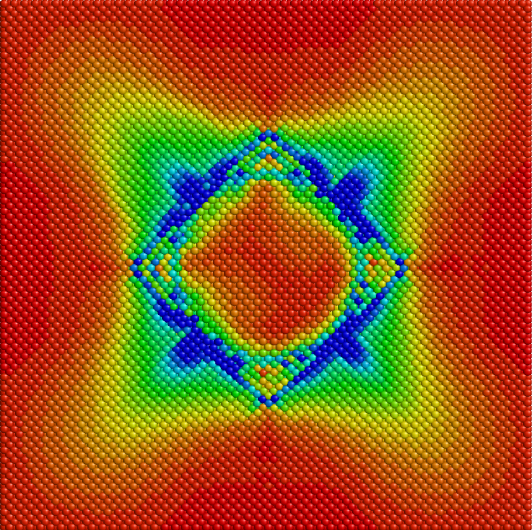Subproject B.2
Atomistic simulation of internal interfaces in copper matrix alloys
Which alloying elements lead to copper matrix alloys with high strengths and high electrical conductivities? How do these properties depend on embedded particles and their interfaces?
 The strength of copper matrix alloys is greatly influenced by internal interfaces. Whereas embedded precipitates and foreign atoms usually enhance strength, electrical conductivity decreases with an increasing number of atoms dissolved in the matrix. Thermal aging can lead to various precipitates which differ in composition, shape and coherency (e.g. planar and coherent Ni2Si or Be precipitates or spherical/octahedral Ag precipitates).
The strength of copper matrix alloys is greatly influenced by internal interfaces. Whereas embedded precipitates and foreign atoms usually enhance strength, electrical conductivity decreases with an increasing number of atoms dissolved in the matrix. Thermal aging can lead to various precipitates which differ in composition, shape and coherency (e.g. planar and coherent Ni2Si or Be precipitates or spherical/octahedral Ag precipitates).
In this project kinetic Monte Carlo simulations are applied to model precipitation. Material properties of the obtained structures are determined by molecular dynamics simulations and by ab initio calculations. The main objective is to understand which chemical compositions and interface configurations lead to both high strengths and high conductivities.
Further information about this subproject

